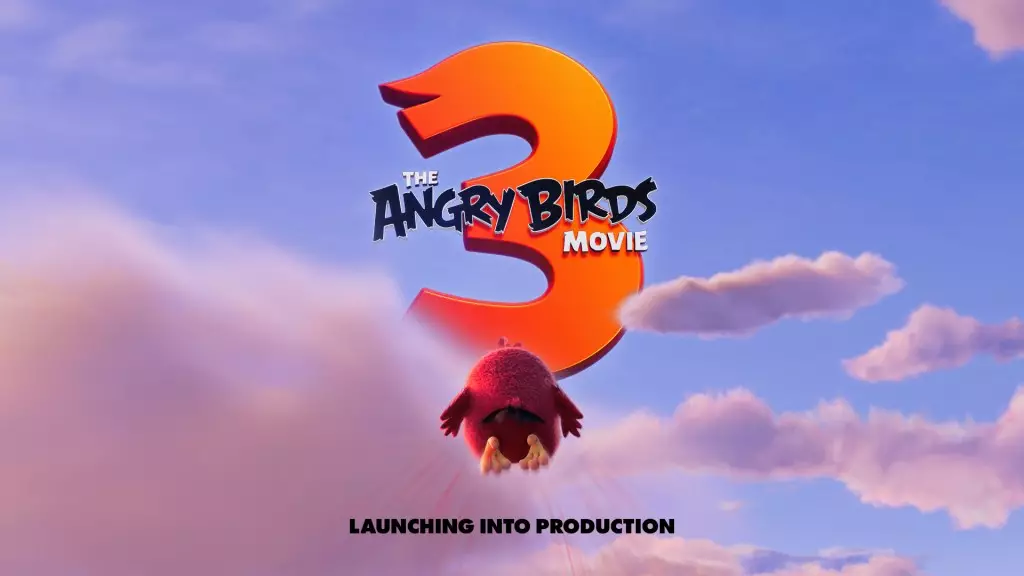In a world increasingly saturated with digital content and fleeting attention spans, it is a feat that Paramount Pictures is embarking on The Angry Birds Movie 3. Set to hit theaters on January 29, 2027, it raises a provocative question about relevancy in a landscape softened by a barrage of animated features. The first two installments raked in over half a billion dollars globally, bolstered by a formidable marketing machine and the universality of the Angry Birds brand. But will nostalgia be enough to draw audiences back to this avian world? What once was a cultural phenomenon rooted in mobile gaming is now contending with a myriad of animated narratives that have seen dramatic innovation from competing studios.
A Familiar Cast, Yet New Perspectives
Bringing back well-loved characters voiced by Jason Sudeikis, Josh Gad, and Rachel Bloom is undoubtedly a stroke of genius from the producers. However, one has to ask: is this reliance on familiar faces a sign of creative stagnation? While the inclusion of talented newcomers like Emma Myers and Keke Palmer infuses fresh energy, it falls short of one vital component—originality. The challenge is to reinvent the narrative rather than relying solely on existing brand loyalty. Reprising popular roles is comforting, yes, but at what cost? Are filmmakers avoiding risks by recycling premises and characters when fresh ideas could elevate the franchise?
Even with the voice talents returning, there lies a subtle risk of irony: in a world where some animated features explore more matured themes and complex human experiences, the quirky charm of Angry Birds may fall behind the innovation curve. The movie needs to embrace a bolder narrative that transcends its initial comedic value. Is a simple story featuring themed conflict between birds and the green pigs enough to engage an audience now familiar with multifaceted storytelling?
Collaborative Ventures: Who Benefits?
The announcement of significant partnerships—Rovio, SEGA, and Prime Focus Studios among others—speaks volumes about a growing trend towards collaboration in the film industry. However, one must question the motivations behind such alliances. As Don McGregor, from Flywheel Media, noted, their goal is to bring family movies to global audiences. Yet, should we perceive this as a collective vision for culture, or is it merely a strategic financial maneuver?
Marc Weinstock from Paramount stated that Angry Birds has “transcended mediums,” but is this just a bland phrase marketing teams use to justify commercial choices? This comment could very well dress up the relentless capitalistic pursuit. Are we valuing economic viability over genuine creativity? Such collaborations should aim at producing quality content that fosters artistic merit rather than pursuing a fast track to box office success.
The Sound of Success or the Noise of Commercialism?
As Heitor Pereira returns to score the film, there’s an echo of previous successes tied to musical talent. Music is crucial in animated films often acting as the emotional backbone. Yet, does relying on a known composer indicate confidence in the film’s core narrative, or is it another tactic to rest on established laurels? The soundscape should amplify innovative storytelling rather than just tie together recycled narratives that audiences have already encountered.
A Legacy in Search of Meaning
As The Angry Birds prepares for its return, the stakes are undoubtedly high. The film’s legacy is shadowed by a need for evolution. It’s a pivotal moment where nostalgia could either transform into a flawed cash grab or become a creative resurgence. If the third installment manages to balance familiar charm with fresh narratives and innovation, it could recapture the hearts of audiences while serving as a lesson in the importance of creative evolution. But therein lies the risk: in clinging too tightly to popular characters and predictable plots, the film might relegitimize itself as just another product in a glutted marketplace rather than a cinematic experience deserving of exploration.
In a time when the animation genre is challenging conventions, The Angry Birds Movie 3 needs to not only aim to entertain but also inspire—reminding us that amidst the chaos of commercialism, creativity must thrive for the legacy of Angry Birds to truly soar.


Leave a Reply